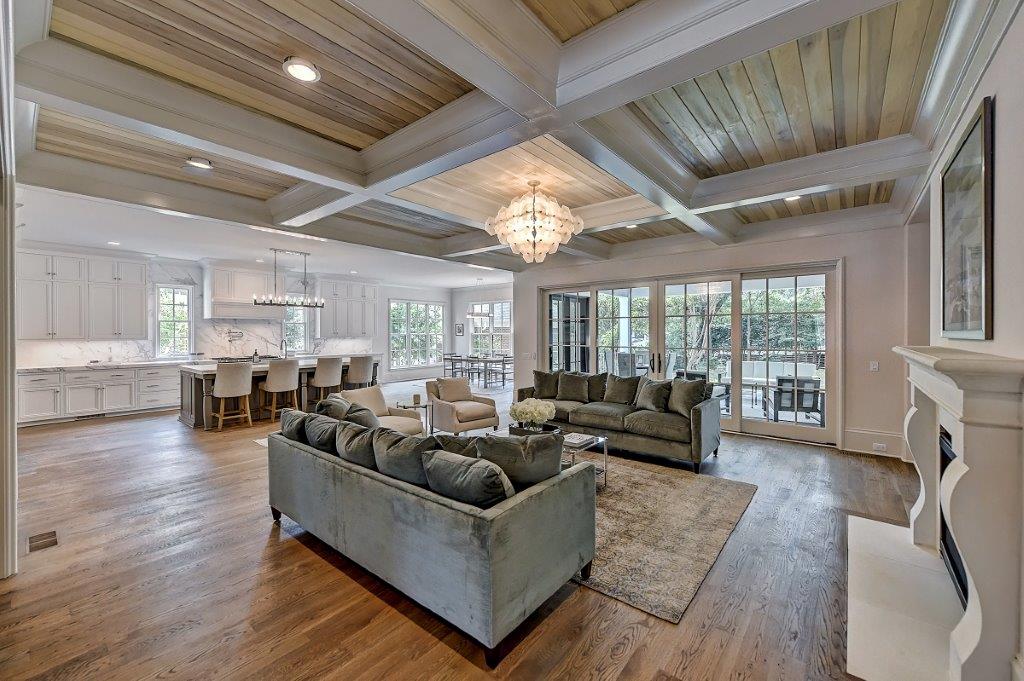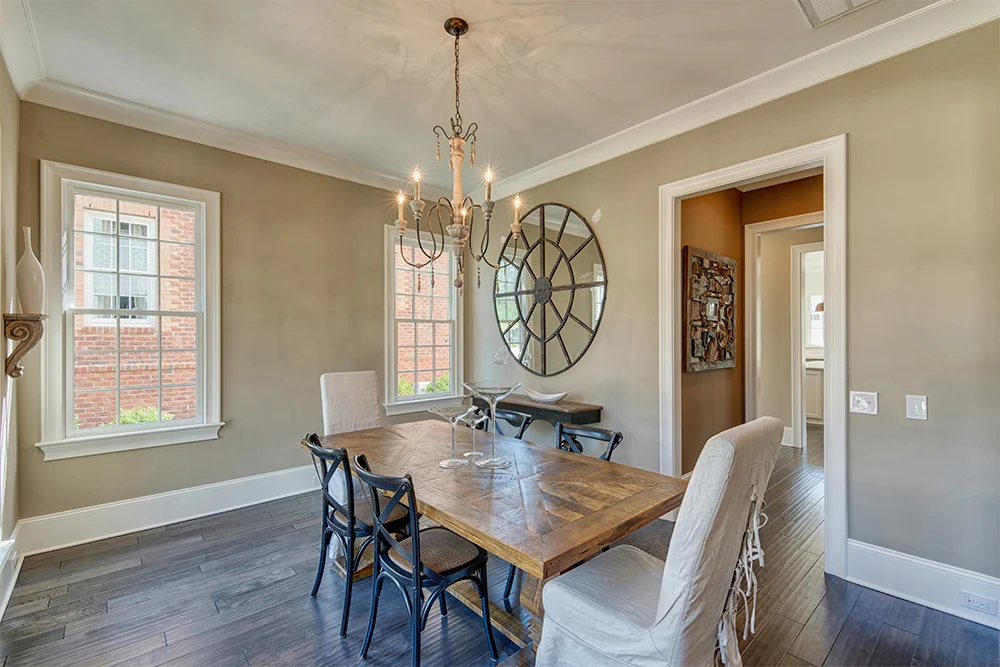Considerations for Choosing an Open Concept vs. Traditional Floorplan
When it comes to designing custom homes, one of the most basic decisions to make is whether to build an open concept home or a traditional floorplan. Newer homes tend to have an open floorplan, since these offer certain advantages for modern living you won’t get with a traditional layout. Understanding the differences between these floorplans can help you determine which one works best for your new custom home.
Open Floorplan Features
Open floorplans are typically seen in newer homes, especially custom homes and semi-custom homes. These floorplans emphasize creating a more inviting atmosphere with fewer walls separating main living areas. For example, these homes usually have a wide-open space where the kitchen, living room, and dining room are located, and may also feature a vaulted ceiling for a more spacious appearance. A great room in the front of the home, which offers even more living space, is also commonly included with this type of floorplan.

Pros and Cons of Open Concept Floorplans
When you’re weighing the advantages of open floorplans versus traditional floorplans, keep the following in mind:
PRO: Open floorplans make it easier to spend quality time with family and friends. Rather than being in separate rooms with walls between you and your loved ones, you can hang out together in your main living area. For example, you can chat with family members or friends while you’re in the kitchen preparing dinner and they’re sitting in the living room.
PRO: This type of floorplan gives you open sightlines that can enhance your home’s appearance. The lack of walls doesn’t block views of other areas of your home, which can allow you to highlight certain features in your home and maintain a visually appealing flow between living areas, such as your kitchen, dining room, and living room.
CON: On the practical side of things, open-concept floorplans can be difficult to achieve if they’re being done as part of a renovation of a traditional floorplan. This type of project might involve removing load-bearing walls, which can cause certain challenges. For example, you might need to have beams installed to make up for the loss of load-bearing walls.
CON: An open concept home makes it more difficult to hide a cluttered living space. While this might not be a problem on a regular basis, it can be an issue when you’re hosting a dinner party or entertaining for the holidays. If you don’t want guests to see a messy kitchen, you’ll need to clean it up right away before sitting down to eat.
Home Trend – Sculleries!
Those who choose an open floorplan for its many benefits of entertaining may also prefer that their kitchen messes are not on display. As a result, we are seeing an increase in homeowners requesting to add sculleries to their custom homes, or as part of their home renovation. Sculleries, separate kitchen “workrooms”, may contain a sink, appliances such as the refrigerator and freezer, and work counters for food preparation.
Traditional Floorplan Features
Traditional floorplans are often seen in older homes, including historical ones. These designs have clearly defined rooms and spaces with walls that set them apart from each other. A traditional floorplan can offer a greater sense of privacy compared to an open concept home. However, this kind of design may also make rooms feel smaller and more closed off, resulting in a home that feels less welcoming overall.

Pros and Cons of Traditional Floorplans
If you’re leaning toward a traditional floorplan for a custom home or a semi-custom home, consider the following first:
PRO: Traditional floorplans don’t restrict you to one interior design style in your home. With an open floorplan, the design and decor in different rooms or living areas should be similar in order to maintain a flow. When your home has a traditional floorplan, you can have different styles and decor in each room.
PRO: These floorplans offer more sound control and privacy due to the walls and doors between rooms. For example, you don’t have to worry about noise from a TV in the living room while you’re in the kitchen. You may also leave kitchen messes for cleaning up later, while you’re entertaining in the separate dining room and living room.
CON: A traditional floorplan may feel stuffy and has a more closed-off appearance compared to open concept homes. Having each room separated with walls and doors can make your home feel much less spacious overall.
CON: This type of floorplan can make it more challenging to keep an eye on younger children who need close supervision. Traditional floorplans may also make it more difficult to spend time together with other family members when everyone is in separate rooms.
Changing Traditional Floorplans into an Open Concept Home
What happens if you live in a historical home or an older home with a traditional floorplan, and it doesn’t fit your lifestyle? If you prefer having a more open living area rather than having main rooms that are separated, you can have renovations made to change to an open floorplan. Working with custom home and renovation experts who have done many of these projects in the Charlotte area ensures that you end up with the results you want. These types of renovations can help you maintain much of your traditional home features while allowing you to have a more open layout.
If you’re ready to get started on designing your new custom or semi-custom home in Charlotte, please contact Simonini Homes today. With our expertise, we can help you determine whether a traditional or open floorplan is the right option for your new single-family home or city home. If you want to change from a traditional floorplan to an open concept one, our team performs home renovations to help you achieve this goal.
YOUR DREAM HOME IS WAITING.
Whether you’re interested in a new build, collective home or renovation, our team is excited to understand your plans and answer your questions. Kindly fill out this form to start the conversation.

